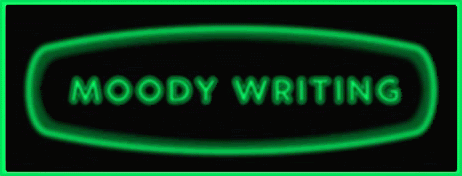The job of a writer is not to describe a story the way you would describe an object to a blind person. If the main character is wearing a blue cardigan and you describe the blue cardigan so the reader now knows exactly what kind of blue cardigan it is, so what? What difference does that make?
The task is not to make sure the reader can see what happens in the story, it’s to make sure they can understand what happens in the story.
To some degree, in order to understand what’s going on you have to be able to see it, but not all things you see add to your unerstandung. Too much description will become overwhelming and be blinding rather than illuminating.
If a woman gets ready to go to work and you very exactly and clearly describe her shoes, unless the shoes play a part in the story (which they might) then the description is pointless. The fact you’re good at describing shoes is not a good enough reason.
But what if the kind of shoes she wears, the condition she keeps them in, all give a better indication of her character and who she is?
Any time you make a considered choice about a description, where you have a purpose behind it, then it becomes part of the story. And you will find that as soon as you do that the description of the shoes changes. In order for it to have meaning, you have to give it meaning, and once you start doing that you will make specific choices that reflect the character’s unique preferences.
A woman going to work in nice shoes turns into bright red pumps that are shiny and immaculate, which she puts in her bag and then puts on sneakers with her Donna Karen business suit and heads off to the subway.
You also have to take into consideration if the meaning your imparting has already been made. If I describe a man getting into an Armani suit, does me telling you the kind of shoes he wears add to that? The same information repeated rarely does.
Generally the only times detailed descriptions are necessary are when it is key to the plot, it gives insight into the character, or if it’s something the reader won’t be familiar with. We all know what a tree looks like, there’s no need to wax lyrical about its plentiful leaves as our hero walks past the one outside his house. But the carnivorous magnolia tree found in the Amazon jungle might not be quite as familiar and require a few words about the branches bearing teeth.
The link between what you tell the reader and what they need to know should be a strong one. It doesn’t have to be absolute, or obvious, or only dealing with the main storyline, there’s always room for some leeway. It doesn’t matter what your reasons are, that’s a matter of personal preference. But the things you describe in details should be chosen deliberately becasue they mean something, not just to add arbitrary background information.
If you found this post vaguely useful, please give it a retweet. Cheers.








































































































16 comments:
Bookmarking this for sure! I'm not heavy on description but I want to be sure I'm doing it right.
Great post. I have read way too many minute details about girls' hair and the color of their eyes and the shape of their noses as they gaze at themselves in a mirror. It's nice when I'm allowed to use my imagination at times, but to have the necessary details when I need them.
@Alex-hope the books selling well!
@Cordelia-it's much easier to just describe everything and hope people sort things out for themselves.
Absolutely, every detail that goes in should have a purpose, either advancing the plot or showing character. What's even better is if you can get the one line to do both. Even description of unfamiliar things probably comes under the heading of 'advancing the plot' because we can't advance without that understanding.
Ah yes. It's this deliberate description that often stumps me when I'm doing my rewrites--especially after I've fiddled with the plot again. Great post, as usual, moody!
Excellent post! It's a fine line to walk deciding which details are important to the story and which are not.
And sometimes mentioning something in passing, in just the right passage, says volumes later.
Its hard, as an author, not to over describe things. We live in a visual world, where most people would rather watch a moving and get very little intimacy as opposed to seeing every detail in flash scene.
Balance isn't always easy.
......dhole
Great advice! I quite like my descriptions but I know I put in a lot of description for the sake of it. Shall be more mindful in future, thanks!
Exactly right! It might have worked in olden times novels, but description for the sake of description... *yawn*
Let putting on her shoes MEAN something. Maybe she has to hunt for them, because her three year old was playing dress-up while she was working on her online night course. One shoe is in the middle of the living room, and the other one is finally discovered stashed under said child's bed. She can't simply put on another pair, because she can't AFFORD more than one nice pair of shoes... Now going off to write said pitiful story about shoes...
@Ciara-once you can get one line to convey more than one thing it also gets the whole subtext thing going.
@nutschell-that's true, every time you make major changes, all the little things you've got just how you like them suddenly have to all be changed.
@Christine-I think it starts with considering it for yourself.
@Donna-yes, but it would be like a movie that's shot entirely in close up.
@Jamie-my pleasure.
@Beverly-I think the fondness people have for older books makes them want to emulate that style.
It took me a while to learn this. REaders don't need to know about how much toothpaste is used every morning, unless it's really THAT important to understanding something worth, well, understanding.
nice post
Great advice, although now I'm going to find myself wondering about the characters shoes every time I read a novel :)
Wagging Tales
@Lydia-although vampire books could do with a littl emore information about the dental hygiene of fangs.
@Charmaine-cheers.
I like what you said about purposeful description to help the reader understand, rather than just to see what's going on. Great post, thanks!
@Andrea-my pleasure.